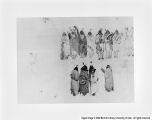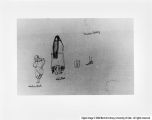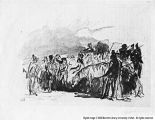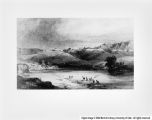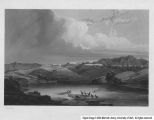| OCR Text |
Show 122 issues without repressing them. He advised Holscher on the method of pressing out the cockling of the sheets, as well as how to wash stained prints with water and sponge.^ Not all such problems were directly Bodmer's fault, if his correspondence can be relied upon. Explaining to Holscher the cause of this shipment of stained prints, Bodmer cites the careless handling of the shipment by custom officials. Whether strictly true or not, the transport of so many thousands of prints by wagon from Paris to Coblenz must have involved risks over which Bodmer had little control. Although the quality of the aquatints was very high, problems were inevitable. Some impressions of a particular plate were better than others. For several of the plates Bodmer devised his own method of quality control, which he described in a letter to Holscher dated September 10, 1839.^9 Bodmer explained he had developed a simple identification code for several of the tableaus, by which Holscher could distinguish the better impressions. On Tableau 31, Indians Hunting the Bison, he placed two dots, one above the other, at the lower left corner of the platemark to indicate the best impressions of the plate, those which had been pulled after the plate had been reworked. He used this same code for Tableau 43, Encampment of the Piekann Indians. For the handcolored impressions of Tableau 13, Mato-Tope. A Mandan Chief, he used a small circle, drawn in pencil on the lower right of the image, to distinguish between the better plates and those which he believed had been colored too heavily and with less skill. The last issue of prints for the German edition of Travels was completed and shipped to Holscher on March 25, 1843. Bodmer wrote to Maximilian in May 1843, announcing that the French edition was also completed, and |
















































